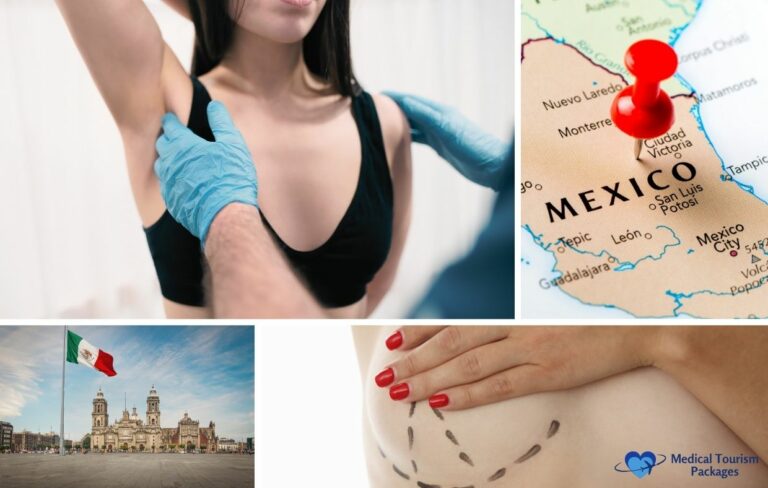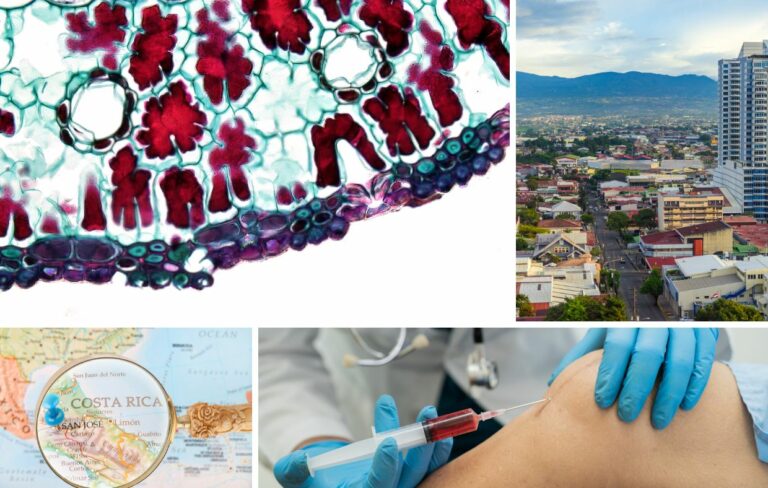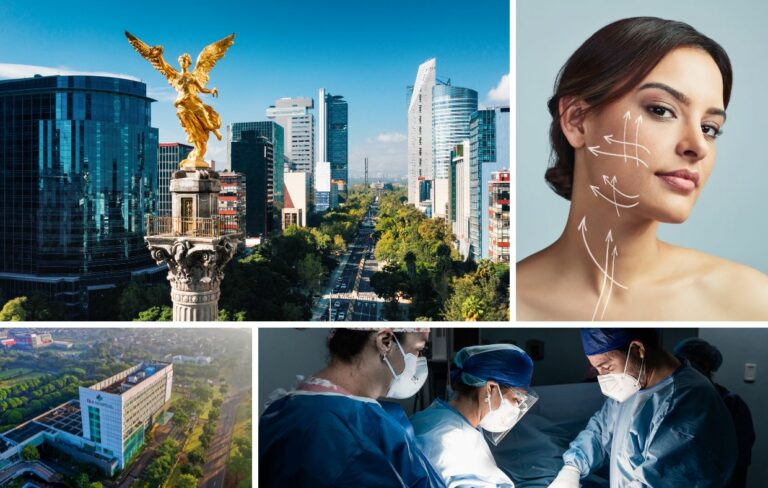Book Appointment Now
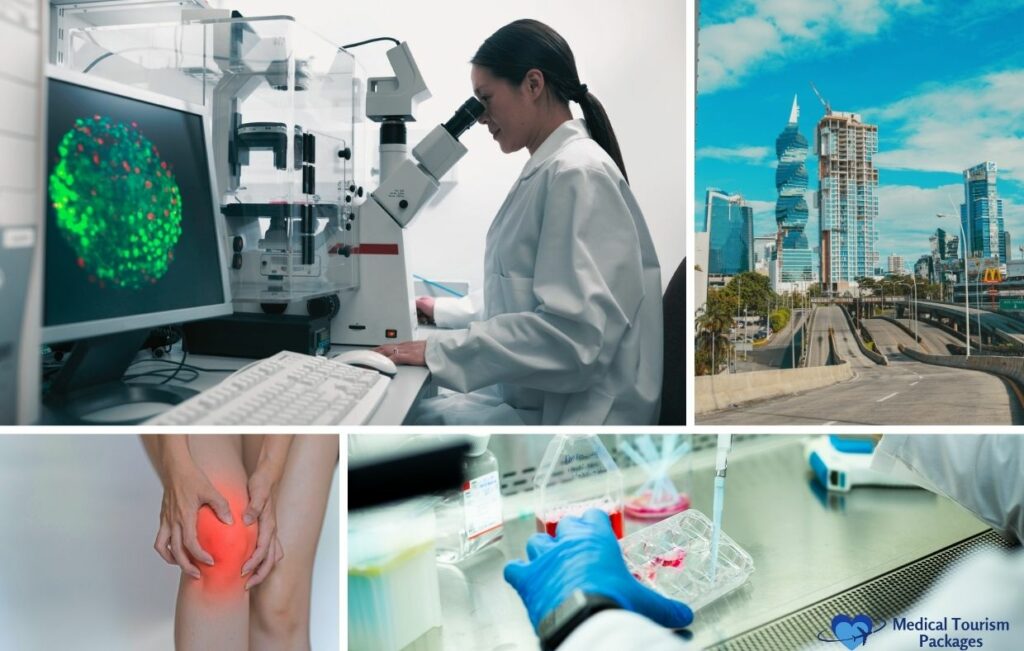
Stem Cell Therapy in Panama: Treatment Options, Costs, and Medical Tourism Guide
Panama has emerged as Central America’s premier destination for regenerative medicine, specializing in advanced stem cell treatments that remain largely unavailable in North America. The country’s clinics have carved out a unique niche by focusing on high-dose protocols backed by clinical research and peer-reviewed studies. Unlike many facilities worldwide that offer basic autologous treatments, Panama’s leading centers have invested in sophisticated banking systems and proprietary cell selection processes that set them apart in the global marketplace.
- Panama specializes primarily in high-dose, allogeneic Mesenchymal Stem Cell (MSC) treatments, often derived from ethically sourced umbilical cord tissue
- The dominant cell source is allogeneic (donor-derived) MSCs sourced from human umbilical cord tissue
- SCI utilizes proprietary selection of six highly effective cell lines, dubbed “Golden Cells™”
Why is Panama a Popular Destination for Stem Cell Treatment?
Panama’s rise as a medical tourism hub combines geographical advantage with regulatory stability and world-class infrastructure. The country occupies a strategic position that makes it uniquely attractive to North American patients seeking alternatives to FDA-regulated treatments. Beyond convenience, Panama has cultivated an ecosystem specifically designed to serve international patients who require specialized care unavailable in their home countries.
Key advantages include:
- Transportation hub status with PTY airport connectivity
- Proximity to North America with developed infrastructure
- Target market of patients excluded from US clinical access
- High quality assurance standards with bilingual medical staff
What Types of Stem Cell Therapies are Available in Panama?
Panama’s clinics offer several distinct stem cell modalities, each with specific applications and advantages. Understanding these differences helps patients identify which treatment approach best matches their condition and expectations. The variety available reflects years of clinical development and specialization within Panama’s regenerative medicine sector.
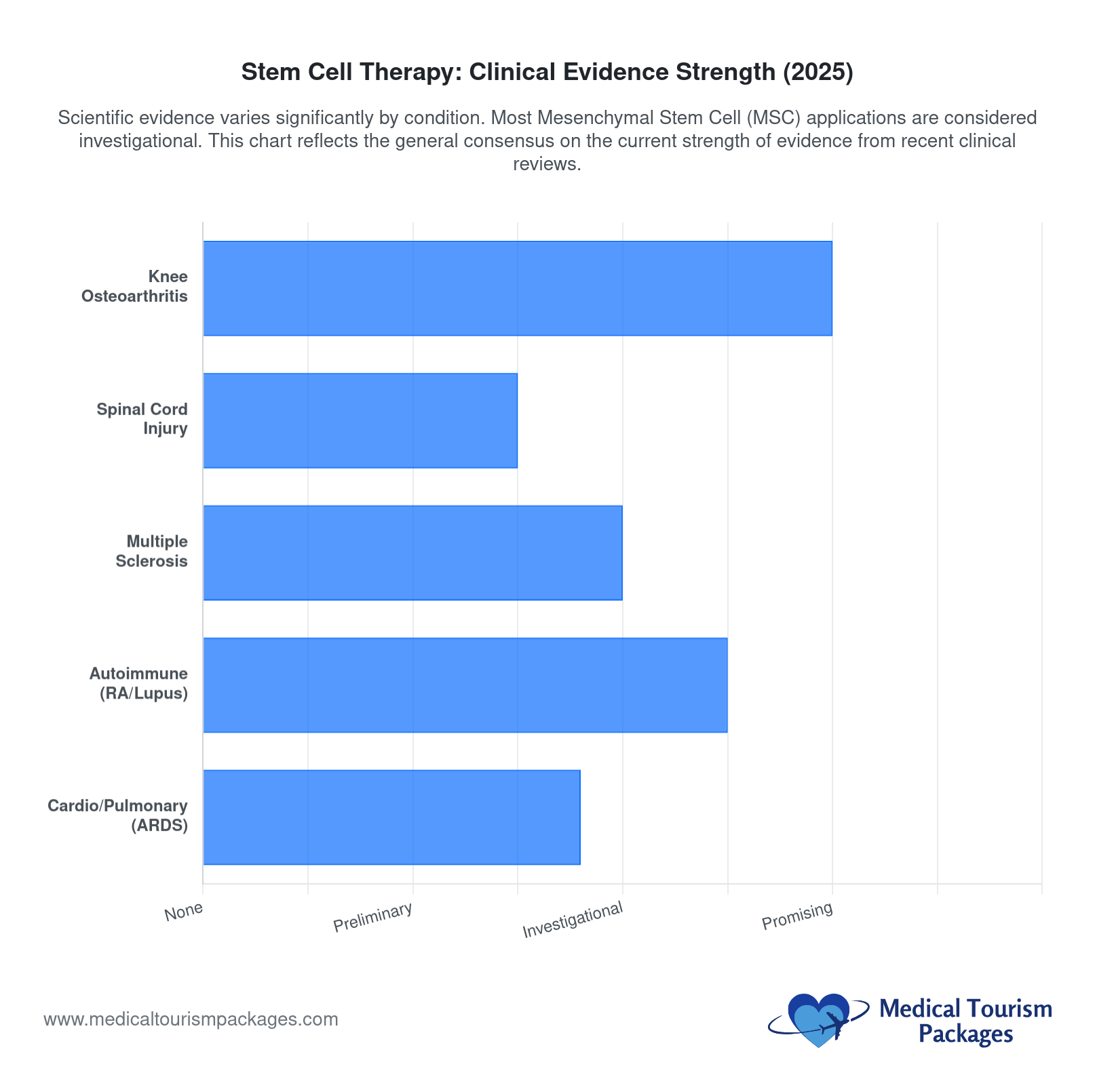
What are Mesenchymal Stem Cell (MSC) Treatments in Panama?
MSC treatments form the cornerstone of Panama’s regenerative medicine offerings. These cells, harvested from umbilical cord tissue, represent the most researched and widely applied therapy option in the country. Panama’s protocols differ from those in many other destinations by emphasizing higher cell doses and multiple administration sessions rather than single infusions.
- MSCs known for their neuroprotective, anti-inflammatory, and immune-modulating properties
- Treatment protocols involve multiple sessions (typically three or more rounds) over several days
What are Adipose-Derived Stem Cell Procedures in Panama?
Fat tissue contains its own population of therapeutic stem cells, offering an alternative or complementary approach to cord tissue treatments. Some Panama facilities have developed expertise in harvesting and processing adipose-derived cells for patients who prefer autologous sources or require specific therapeutic applications where fat-derived cells show particular promise.
- PCT Panama offers Adipose-Derived MSC (Autologous/Donor)
What are Umbilical Cord Blood Stem Cell Options in Panama?
Beyond the tissue itself, umbilical cord blood represents another valuable therapeutic resource. Banking these cells allows clinics to maintain quality-controlled repositories that ensure consistency and immediate availability. This banking infrastructure supports the high-dose systemic treatments that Panama’s facilities have become known for internationally.
- Allows for banking of high-dose, highly standardized cells necessary for systemic treatment of chronic diseases
Note: Stem cell therapy differs from stem cell transplantation, which involves replacing diseased bone marrow for conditions like leukemia. For information on stem cell transplant procedures in Panama, which follow different protocols and treat different conditions, please refer to our dedicated transplant guide.
Which Medical Conditions Can Be Treated with Stem Cells in Panama?
The scope of treatable conditions in Panama’s stem cell clinics spans multiple medical specialties, though outcomes vary significantly based on disease progression and individual patient factors. Each condition category requires specific delivery methods and dosing protocols that leverage MSCs’ unique biological properties.
| Category | Conditions | Notes |
|---|---|---|
| Orthopedic | Osteoarthritis, Degenerative Joint Disease, Sports Injuries | Delivered via intra-articular injection methods |
| Autoimmune | Lupus, Rheumatoid Arthritis | Treatment aims for immune recalibration |
| Neurological | MS, Autism, Cerebral Palsy, Parkinson’s, Spinal Cord Injury, Stroke | Uses intrathecal administration |
| Cardiovascular | Heart failure cases | Shows documented ejection fraction improvements |
How Much Does Stem Cell Therapy Cost in Panama?
Panama’s pricing structure reflects its positioning between budget-oriented destinations and premium US facilities. The costs account for sophisticated treatment protocols, high-dose cell preparations, and comprehensive patient support services. Understanding these price points in context helps medical tourists evaluate whether Panama’s value proposition aligns with their needs and budget.
| Condition | Panama | USA | Mexico | Colombia |
|---|---|---|---|---|
| Multiple Sclerosis | $18,000-$34,000 | $20,000-$50,000+ | $7,000-$8,500 | $7,000-$20,000 |
| Osteoarthritis | $18,000-$20,000 | $5,000-$10,000 | $1,500-$3,100 | $5,000-$10,000 |
| Spinal Cord Injury | $25,000-$40,000 | $30,000-$60,000+ | Variable | Variable |
| General Average | $15,000-$30,000+ | $10,000-$50,000 | $5,000-$25,000 | $7,000-$20,000 |
How Do You Choose the Best Stem Cell Clinic in Panama?
Selecting the right clinic requires careful evaluation of multiple factors beyond marketing claims and testimonials. The proliferation of stem cell facilities worldwide means patient due diligence has never been more critical. Quality indicators range from physician credentials to transparency about outcomes and the comprehensiveness of patient support services.
What Credentials Should Top Panama Stem Cell Doctors Have?
Your treating physician’s qualifications directly impact both treatment safety and the likelihood of positive outcomes. The best doctors in regenerative medicine don’t simply follow protocols. They contribute to developing them through active research and innovation. Look beyond basic medical licensing to evaluate each physician’s engagement with the scientific community and track record of advancing the field.
Key credentials to verify:
- Advanced degrees in health sciences or medicine
- Published research (e.g., Dr. Riordan: 70+ peer-reviewed publications)
- Patents in regenerative medicine (e.g., 11 issued patents)
- Full Panamanian medical licensing
How Can You Verify Treatment Success Rates?
Transparency about outcomes separates reputable clinics from questionable operators in the stem cell field. While many facilities make impressive claims about success rates, verifying these assertions requires looking at published data and understanding how “success” is defined for different conditions. The most credible clinics willingly share detailed outcome information and acknowledge the limitations of their data.
- Some clinics claim success rates exceeding 90% for musculoskeletal and autoimmune conditions
- Leading centers publish protocols and outcomes in peer-reviewed literature
- Critics note efficacy data is often unblinded
What Support Services Should Quality Clinics Offer?
Medical expertise represents only part of the treatment equation for international patients. The logistical and emotional challenges of medical tourism require comprehensive support infrastructure that extends well beyond the treatment room. Top-tier facilities recognize these needs and build systems specifically to address them.
- Dedicated international patient departments
- Bilingual staff and medical interpreters
- Patient advocates throughout treatment process
- Concierge services for logistics
What is the Complete Treatment Process in Panama?
Understanding the treatment timeline helps patients plan appropriately and set realistic expectations. The journey from initial inquiry to post-treatment monitoring follows a structured pathway designed to maximize outcomes while minimizing stress. Most patients spend approximately one week in Panama for core treatments. Remote follow-up extends for months afterward.
- Pre-Visit Application and Medical Review (1-5 working days)
- Scheduling and Payment Arrangements (variable timeframe)
- Day 1: Arrival with VIP customs clearance, hotel check-in, initial evaluation
- Days 2-4: Core stem cell administration (IV, injections)
- Day 5: Discharge planning and departure
- Ongoing: Remote monitoring and progress check-ins
What are the Risks and Potential Complications?
Every medical intervention carries inherent risks, and stem cell therapy is no exception. Understanding potential complications enables informed decision-making and appropriate expectation-setting. While the safety profile of characterized MSCs compares favorably to many conventional treatments, complete risk elimination remains impossible in any therapeutic context.
What Immediate Side Effects May Occur?
Most patients experience minimal adverse effects during and immediately following stem cell administration. The reactions that do occur typically resolve quickly without intervention. Understanding these common responses helps distinguish normal treatment reactions from genuine complications requiring medical attention.
- Most reactions are minor and localized: temporary discomfort or swelling at injection site
- Stem cell therapy using characterized MSCs generally considered safe
- Serious complications are rare with proper protocols
What Long-term Risks Should Patients Consider?
Long-term safety data continues to accumulate as stem cell therapy matures from experimental treatment to established practice. While extensive experience suggests a favorable safety profile, theoretical risks warrant consideration and ongoing monitoring. Reputable clinics maintain proximity to full-service hospitals precisely to manage any unexpected complications.
Potential complications include:
- Infection risk
- Inflammatory responses
- Adverse immunological reactions
- Theoretical risk of tumor development (unproven but monitored)
- Note: Clinics located adjacent to major medical centers like Punta Pacifica for emergency access
How Effective is Stem Cell Treatment in Panama?
Treatment effectiveness represents the most important consideration for prospective patients, yet it remains among the most difficult to predict with precision. Outcomes vary based on condition type, disease progression, individual biology, and treatment protocols. Understanding what clinics report and what factors influence results helps calibrate expectations appropriately.
What Results Do Clinics Report?
Panama’s leading facilities have documented outcomes across various conditions, with some results published in peer-reviewed literature. These reports provide valuable insight into treatment potential, though interpreting them requires understanding their limitations and context. The most credible data comes from clinics that track patients systematically and share both positive and negative outcomes.
- Success rates exceeding 90% reported for some musculoskeletal and autoimmune conditions
- Documented case of heart failure patient with significant ejection fraction improvement
When Should Patients Expect to See Improvements?
Stem cell therapy operates on a fundamentally different timeline than conventional medications. The regenerative process takes time as cells work to repair underlying tissue damage rather than simply masking symptoms. Patient education about this timeline prevents disappointment and helps maintain realistic expectations during the crucial early months.
- Regenerative results typically materialize over months, not days
- Medical teams provide ongoing remote support to track progress
- Regular check-ins help monitor gradual improvements
What Influences Treatment Success?
Multiple variables affect individual outcomes in ways that make predicting results for any specific patient challenging. Understanding these factors helps patients assess their own likelihood of benefit and make informed decisions about pursuing treatment. The interplay between patient characteristics, disease factors, and treatment variables creates unique scenarios for each case.
- Treatment environment similar to Phase II clinical trials without placebo risk
- Multiple treatment sessions improve outcomes
- Patient’s baseline health and condition severity affect results
What Should Medical Tourists Know About Traveling to Panama?
Successful medical tourism requires attention to practical details beyond selecting the right clinic and treatment. Panama makes international travel relatively straightforward for most visitors, but proper preparation prevents unnecessary complications. Understanding entry requirements, accommodation options, and logistical considerations ensures a smooth experience from departure to return home. For American patients, our comprehensive guide to medical tourism in Panama provides detailed information on travel planning and what to expect.
What Documents are Required for Medical Travel?
Panama maintains relatively simple entry requirements that most international visitors can easily satisfy. Gathering proper documentation before departure prevents delays and complications upon arrival. Your clinic may also require specific medical records in advance, so compile comprehensive health information early in the planning process.
Required documentation:
- Valid passport (minimum 6 months validity)
- Tourist card (allows 90-day stay, purchased on arrival)
- Proof of sufficient funds
- Return ticket confirmation
- Hotel reservation documentation
Where Will You Stay During Treatment?
Accommodation choices range from convenient urban hotels to peaceful recovery retreats throughout Panama. Many clinics integrate lodging into treatment packages, simplifying logistics and ensuring proximity to medical facilities. The accommodation decision should balance practical considerations like accessibility with personal preferences for environment and recovery setting.
- Stem Cell Institute packages include Hilton Panama stay
- Recovery options include Bocas del Toro beach resorts or Boquete mountain retreats
- Many clinics offer integrated luxury lodging with VIP transport services
How Does Panama Compare to Regional Alternatives?
Medical tourists face choices across multiple Latin American countries, each offering distinct advantages and trade-offs. Understanding how Panama positions itself relative to regional competitors helps patients determine which destination best matches their priorities. Price, quality, regulatory environment, and treatment approaches all factor into this complex decision. For a comprehensive overview of stem cell therapy options throughout Latin America, explore our regional comparison guide.
Panama vs Mexico for Stem Cell Treatment
Mexico attracts budget-conscious patients with substantially lower costs than Panama. The proximity to the United States makes it particularly convenient for American medical tourists. However, significant differences in treatment approaches and regulatory oversight distinguish these two markets.
- Panama offers premium infrastructure vs Mexico’s budget-oriented, autologous cell focus
- Higher regulatory standards in Panama justify increased costs
Panama vs Costa Rica for Stem Cell Treatment
Costa Rica once competed directly with Panama for stem cell patients until regulatory uncertainty reshaped the market. The departure of major providers from Costa Rica illustrates the importance of stable regulatory environments for sustaining high-quality medical tourism infrastructure.
- Stem Cell Institute closed Costa Rica operations citing “unpredictable regulatory landscape”
- Panama’s regulatory stability attracts serious providers
Panama vs Colombia for Stem Cell Treatment
Colombia offers middle-ground pricing between Mexico’s budget options and Panama’s premium positioning. The country has invested in medical tourism infrastructure and boasts capable physicians. However, quality consistency varies more widely between Colombian facilities than within Panama’s more concentrated stem cell sector.
- Colombia offers mid-tier services with variable oversight
- Panama maintains premium positioning with consistent standards
Should You Choose Panama for Your Stem Cell Therapy?
The decision to pursue stem cell therapy in Panama depends on your specific medical situation, financial resources, and comfort with international treatment. Panama offers a compelling combination of advantages that explain its growing reputation in regenerative medicine. Weighing these factors against alternatives helps determine whether Panama represents the right choice for your circumstances.
Final considerations:
- JCI accreditation at partner hospitals (e.g., Hospital Punta Pacifica)
- Johns Hopkins affiliations for quality assurance
- Strong regulatory environment ensuring safety
- Balance between US-level quality and significant cost savings
- Comprehensive support for international patients
How Can Medical Tourism Packages Help with Your Panama Treatment?
Navigating international medical travel requires coordination across multiple providers, languages, and systems. Medical Tourism Packages simplifies this process by connecting you with vetted stem cell clinics in Panama while handling logistics from consultation through recovery. Our facilitation services ensure you receive transparent pricing, verified credentials, and comprehensive support throughout your treatment journey.
We understand that choosing stem cell therapy abroad represents a significant decision requiring careful guidance. Our experienced team provides personalized assistance with clinic selection, treatment planning, travel arrangements, and ongoing advocacy. Ready to explore your options? Contact Medical Tourism Packages today to discuss how we can facilitate your Panama stem cell treatment with confidence and peace of mind.
Frequently Asked Questions
Is stem cell therapy in Panama safe for international patients?
Yes, when performed at accredited facilities with proper protocols. Panama’s leading stem cell clinics use characterized MSCs with documented safety profiles. Facilities are located near major hospitals like Punta Pacifica for emergency access. The most common side effects are minor and temporary, such as injection site discomfort or mild fatigue. Serious complications are rare when clinics follow proper sterile techniques and use thoroughly tested cell preparations.
What conditions respond best to stem cell therapy in Panama?
Musculoskeletal conditions like osteoarthritis and sports injuries show strong response rates, with some clinics reporting over 90% success. Autoimmune disorders (lupus, rheumatoid arthritis) and neurological conditions (MS, Parkinson’s, spinal cord injuries) also show documented improvements. Results vary by disease stage—earlier intervention typically produces better outcomes than treating advanced, irreversible damage.
Can stem cell therapy help if conventional treatments have failed?
Many patients travel to Panama specifically because conventional treatments haven’t worked or aren’t available. The therapy targets underlying tissue damage and immune dysfunction rather than just managing symptoms. However, stem cells aren’t miracle cures—patients with severe, longstanding damage may see modest rather than dramatic improvements.
How long do I need to stay in Panama for stem cell treatment?
Most treatment protocols require approximately 5–7 days in Panama. Day 1 involves arrival and initial evaluation. Days 2–4 cover core stem cell administrations (typically 3+ sessions). Day 5 includes discharge planning. Some patients extend their stay for additional rest or tourism. Remote follow-up continues for months after you return home.
When will I see results from stem cell therapy?
Unlike medications that work quickly, regenerative results materialize over months, not days or weeks. Some patients notice subtle improvements within the first month, but most significant changes appear between 3–6 months post-treatment. This timeline reflects the biological process of tissue repair rather than symptom masking. Your medical team provides regular check-ins to monitor gradual progress.
Why does Panama cost more than Mexico but less than the US?
Panama positions between budget and premium options. Compared to Mexico ($5,000–$25,000), Panama ($15,000–$30,000+) uses higher-dose allogeneic protocols versus Mexico’s autologous focus. Panama offers sophisticated banking systems and multiple treatment sessions. Compared to the US ($10,000–$50,000+), Panama provides significant savings while maintaining JCI-accredited facilities and bilingual care that rivals American standards.
How do I verify a Panama stem cell clinic is legitimate?
Check for published research by clinic physicians (70+ peer-reviewed publications indicates serious scientific engagement). Verify full Panamanian medical licensing and look for JCI accreditation at partner hospitals. Legitimate clinics publish protocols in medical literature and provide transparent outcome data. Ask about cell sourcing, characterization methods, and quality control processes. Avoid clinics making unrealistic promises or lacking verifiable credentials.
Should I choose Panama or another country for stem cell therapy?
Panama excels for patients wanting premium quality without US prices. Choose Panama if you prioritize regulatory stability, bilingual support, US proximity, and established infrastructure. Choose Mexico if budget is the primary concern and you’re comfortable with autologous treatments. Avoid Costa Rica due to regulatory uncertainty. Panama’s consistent standards across facilities reduce risk compared to countries with variable oversight.
What happens if I have complications after returning home?
Reputable Panama clinics provide ongoing remote monitoring and support after you leave. Your treatment team remains available via phone, email, or video for questions and concerns. For serious complications (rare with proper protocols), you’ll need local medical care since returning to Panama isn’t practical for emergencies. Ensure your home doctor receives complete treatment records before departure.
Do I need a companion for stem cell treatment in Panama?
While not mandatory, bringing a companion is recommended. Treatment itself isn’t debilitating, but having support helps with navigation, translation assistance, and emotional comfort in an unfamiliar country. Some patients travel alone successfully using clinic concierge services. Consider your comfort level with solo international travel and your specific medical condition when deciding.

